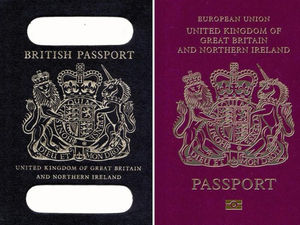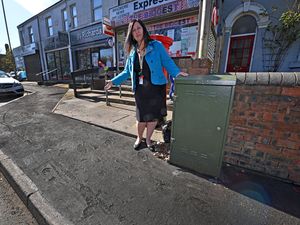POLL: Does the colour of your passport matter to you?
British passports will return to having blue covers after Brexit - and we want to know your thoughts on the issue.

The Government announced on Friday plans to ditch the EU burgundy cover in favour of a return to the old blue-coloured passports once Britain leaves the union.
The redesign, which routinely happens every five years, will come as part of a £490 million contract which also includes printing and assembling passports and runs for 11-and-a-half years.
But former Dragon's Den panellist James Caan was attacked for claiming in a tweet it would cost £500 million just to change the colour.
The post was shared tens of thousands of times, and the entrepreneur has now admitted it was "fake news".
It comes after Environment Secretary Michael Gove last month hit out at social media users who wrongly claimed MPs voted against treating animals as sentient beings.
The row prompted one of Theresa May's top aides to intervene on Saturday.
Robbie Gibb, the Prime Minister's director of communications, tweeted: "Fake news harms our democracy. Those who would deliberately misrepresent public policy for political gain - be it passports or animal sentience - should be called out."
On Friday, Mr Caan shared an Independent article from April which carried the headline "£500 million plan to 'bring back blue passports' after Brexit", adding: "A country that would spend £500m to change the colour of a passport while children sleep on the streets is a country whose priorities are wholly out of whack."
The tweet, which had been shared more than 27,000 times by Saturday evening, prompted Home Office minister Brandon Lewis to reply: "This is factually wrong. The new passport will not cost the taxpayer any extra, will you correct this misinformation? Huge thx".
Mr Caan then admitted on Saturday: "Good news. Having researched the cost of providing new passports it appears the £500m for the colour is fake news.
"However, that doesn't detract from my intention that together as a society we need to prioritise tackling issues such as children in poverty and homelessness."
Mrs May has hailed the move to bring back blue travel documents as an expression of the UK's post-Brexit "sovereignty and independence", although Nicola Sturgeon described it as "insular, inward looking, nonsense".
The European Parliament's chief Brexit coordinator Guy Verhofstadt pointed out that Britain could have chosen to have a blue passport while remaining a member of the EU.
There is no Brussels regulation which states that EU countries' passports have to be a certain colour, simply a legally non-binding European Council resolution from 1981 which recommends burgundy red.
Mr Verhofstadt tweeted: "There is no EU legislation dictating passport colour. The UK could have had any passport colour it wanted and stay in the EU."
The new design, which will no longer include the EU insignia, will replace the EU-style burgundy cover that has been a feature of the UK passport since the 1980s.
It will be phased in after the UK leaves the EU on March 29 2019.
Burgundy passports will continue to be issued, although without the EU markings, until the current supplier's contract expires in October 2019.
Blue was first used for the cover of the British passport in 1921, but the design changed in 1988 after the UK joined the European Economic Community and burgundy was chosen as the common colour.
Among the new design features will be a new picture page made of a "super-strength plastic polycarbonate material that will be more difficult to alter", the Home Office said.
The Government is facing demands from arch-Brexiteer Tory MPs Jacob Rees Mogg and Andrew Bridgen to ensure the new passports are manufactured in Britain.




